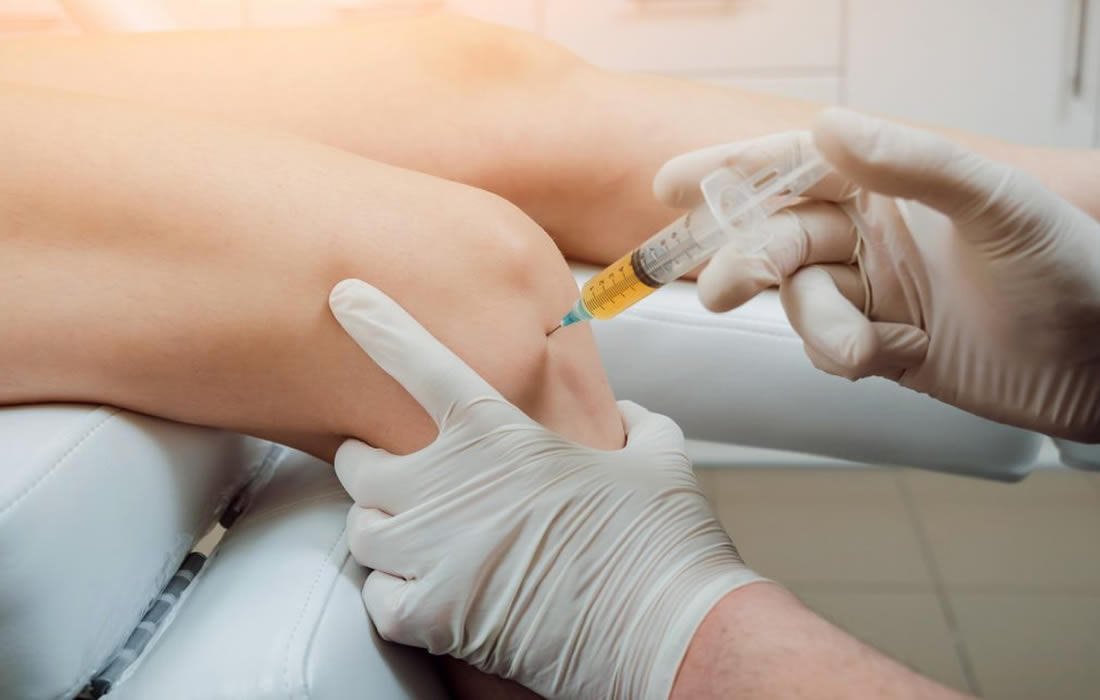Platelet-Rich Plasma
Platelet-rich Plasma in Sports Medicine
Platelet-rich plasma (PRP) therapy includes a group of autologous blood products that are obtained from the patient’s own blood and is administered locally to treat various musculoskeletal disorders.
Basic science and clinical research on PRP have expanded in recent years, particularly regarding the use of PRP to treat athletic injuries. These therapies have also gained considerable notoriety in the media as a result of some high-profile professional athletes being treated with PRP for various injuries.
For example, Pittsburgh Steelers wide receiver Hines Ward was treated with PRP for a knee sprain in 2009 prior to the Super Bowl and Philadelphia Phillies’ pitcher Cliff Lee was treated with PRP for an abdominal strain at the beginning of the 2010 baseball season.
Whole blood is composed of various components including plasma, red blood cells, white blood cells, and platelets. The plasma contains primarily water and various proteins including fibrinogen, which captures platelets at the site of injury. Platelets serve 2 functions in response to tissue injury. Initially, it was thought that platelets were only involved in hemostasis and clot formation. However, it is known that platelets also release cytokines and growth factors that are involved in the healing process.
Some of the growth factors involved in the healing process are:
- Transforming growth factor-β1 (TGF-β1 ).
- Vascular endothelial growth factor (VEGF).
- Platelet-derived growth factor (PDGF).
- Epidermal growth factor (EGF).
- Fibroblast growth factor (FGF).
- Insulin-like growth factor-1 (IGF-1).
Platelet-rich plasma therapy provides for a highly concentrated aggregate of platelets at an injury site. The normal platelet concentration in blood ranges from 150,000-350,000 platelets per μL. In PRP products, depending on which system is being used, this concentration may be increased 3- to 5-fold to a level of approximately 1 million platelets per μL.
This increased platelet count at the injury site releases the growth factors contained with their granules, potentially stimulating the healing response.
These products have minimal safety concerns for the patient due to the fact that PRP therapies are obtained from autologous blood. There is no evidence to indicate that PRP therapies cause hyperplasia, tumor growth, or carcinogenesis.
Clinical Applications in Sport Medicine
Tendinopathy
The effects of PRP have been investigated for various tendon-related disorders. Tendon-related injuries can be troublesome because they heal at a relatively slow rate, they have poor vascularity, and they are affected by mechanical factors.
Several laboratory studies have shown that PRP can increase collagen gene expression and various growth factors in human tenocytes, stimulate type I collagen production, and attract circulation-derived cells.
Platelet-rich plasma therapy has also demonstrated increased cell proliferation, angiogenesis, early tendon regeneration, and strength in animal models.
Injectable PRP products have been used as a non-surgical treatment option for patellar tendinopathy and medial and lateral epicondylitis. For both Achilles tendon ruptures and rotator cuff tears, the PRP product is used to augment the surgical repair.
A study by Mishra and Pavelko treated 15 patients with chronic severe elbow tendinosis with PRP. These patients were compared with a control group (5 patients) with chronic severe elbow tendinosis who received injections of a local anesthetic. The patients who were treated with the PRP injection had a 60% reduction in pain by 8 weeks and a 93% reduction in pain by the final follow-up, which ranged from 12 to 38 months.
Another study compared patients with lateral epicondylitis using PRP versus corticosteroid injections. Of the patients that received PRP, 73% reported a reduction in pain and improvement in functional scores within 1 year compared to 49% in the corticosteroid group.
Rotator cuff tears are common in older athletes and are often difficult to treat because of a high retear rate following surgical repair. Using the liquid formulation of PRP, a prospective cohort of 14 patients who underwent arthroscopic rotator cuff repair were injected with PRP at the repair site and were then followed up for 2 years. All of the patients demonstrated significant improvements in pain and functional shoulder scores. This randomized controlled trial demonstrated that patients who were treated with PRP recovered faster, had a greater range of motion, had an earlier return to routine daily activities, and required less pain medication.
Ligament/Facial Injury
Although PRP has shown promise for the treatment of acute medial collateral ligament, anterior cruciate ligament (ACL), and plantar fascia injuries, few clinical studies have demonstrated any significant benefit.
However, a prospective study of 50 patients who underwent ACL reconstruction indicated that the inclusion of PRP gel reduced the time to achieve a complete homogeneous graft by almost half, based on magnetic resonance imaging.
Skeletal Muscle Injury
Clinical and laboratory studies have indicated that PRP may improve the healing of skeletal muscle injuries. PRP has shown to have a significant effect on myogenesis as well as shorten recovery time in a high-repetition muscle injury rat model. Additionally, TGF-β1 was found to have a role in regulating fibrosis during skeletal muscle healing.
Cartilage Lesions
Clinical trials are underway to evaluate the role of PRP in the treatment of osteoarthritis and cartilaginous injury.
30 patients with knee osteoarthritis treated with a series of 3 weekly injections of PRP were compared with another 30 patients with knee osteoarthritis who were treated with a series of hyaluronic acid injections. The patients treated with PRP had better Western Ontario and McMaster Universities Osteoarthritis Index (WOMAC) and pain scores at 5-week follow-up.
Sources:
Bava, E. D., & Barber, F. A. (2011). Platelet-Rich Plasma Products in Sports Medicine. The Physician and Sportsmedicine, 39(3), 94–99. doi:10.3810/psm.2011.09.1925
Grambart, S. T. (2015). Sports Medicine and Platelet-rich Plasma. Clinics in Podiatric Medicine and Surgery, 32(1), 99–107. doi:10.1016/j.cpm.2014.09.006
Images from:
https://sportdoctorlondon.com/platelet-rich-plasma-injections/

